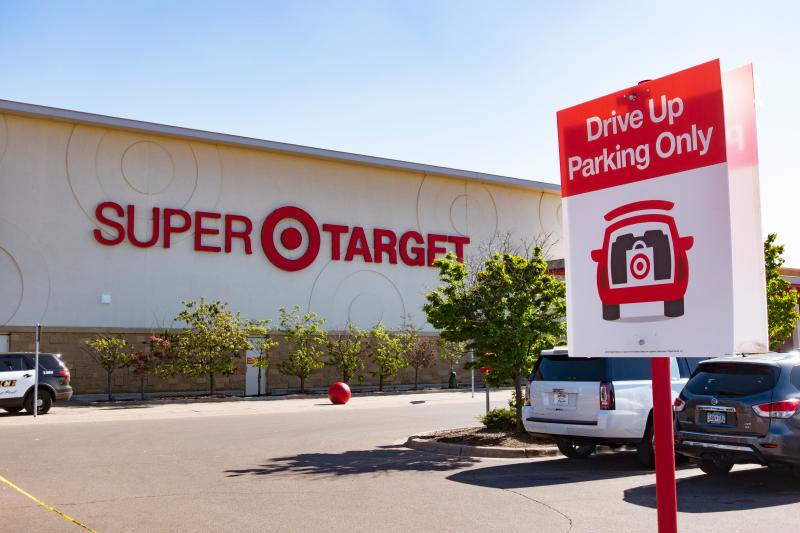Target Launching Nationwide Drive-Up Returns, Highlights Strategic Store and Supply Chain Investments
Target is moving forward on what started as a pilot, launching drive-up returns across all its stores by the end of summer.
In the latest earnings report from Target, the company highlighted progress across several categories — fulfillment being one of them. The company’s drive up services began as a test in the Minneapolis market in 2017, expanding to more than 1,000 stores in the U.S. by the following year, and then all 50 states in 2019. In 2020, the company made fresh and frozen groceries available within the service, and last year Starbucks drive-up testing made its debut.
Now, Target COO John Mulligan said the company is moving past its pilot phase on returns, allowing consumers to initiate a return from their car via a guided experience within the Target app. The capability is available for most new, unopened items within 90 days of purchase.
“Not only is this a huge win for our guests, who can now do even more drive up, but it brings more efficiency to our returns process with more resale opportunities and fewer expenses for mail and returns,” said Mulligan in a recent call with investors.
Same-day services like drive-thru pickup grew nearly 7% last year, the company reports — an indicator that the brand’s overall “store as a fulfillment hub” strategy is making progress.
Target plans to continue to push forward in this arena. In a recent release, the company shared its plans to invest $4 billion to $5 billion this year to expand its guest-centric services, operations network of stores and supply chain facilities, digital experiences, and other capabilities like enterprise efficiency.
CEO Brian Cornell shared additional insights on the call, stating that 95% of all sales, including digital, are fulfilled by stores.
Following the success of a 150,000 square-foot store prototype launched late last year in Katy, TX, Target plans to replicate efforts such as larger back rooms than average stores to ramp up same-day fulfillment.
“We plan to open about 20 stores this year in a mix of sizes, from the shores of the Outer Banks in N.C. to the heart of Inglewood, CA,” said Mulligan. “We're also planning to invest in about 175 stores throughout the year, ranging from full remodels to the addition of shop-in-shop experiences like Ulta Beauty and retrofitted fulfillment spaces to support our same-day services.”
Supply Chain Investments
Additional investments in this area include increased upstream capacity via new flow centers in Chicago and New Jersey — with more coming over the next few years — and a food distribution center that opened in Maryland last October.
The company also recently announced several sortation center investments, totaling $100 million to scale its sortation center network to more than 15 facilities, which includes opening more than six new centers by the end of 2026.
“These facilities have transformed how we move inventory with speed and precision to guests' doorsteps,” said Mulligan. “We started with a prototype less than two years ago to see how we might bring more efficiency to how we sort, batch, and route packages.”
According to Mulligan, Target delivered more than 25 million packages through sortation centers last year, and it expects to double that amount in 2023 with the assistance of local and national carriers. Up to 40% of orders are delivered in one day when using Target’s last-mile delivery capabilities with Shipt, which has led to lower delivery costs, and “more nimble sourcing, inventory management, and fulfillment capability at Target.”
“Turning stores into fulfillment hubs was and still is the most efficient and least costly way to grow omnichannel sales,” said Cornell.
As part of these growth initiatives, the company reports that it is also looking to achieve $2 billion to $3 billion in cost savings over the next few years as it expands on enterprise efficiency efforts that simplify operations and enhance the team and guest experience.






